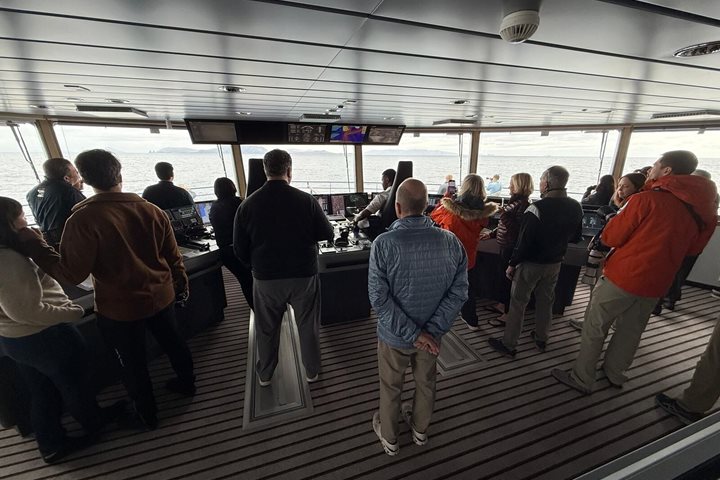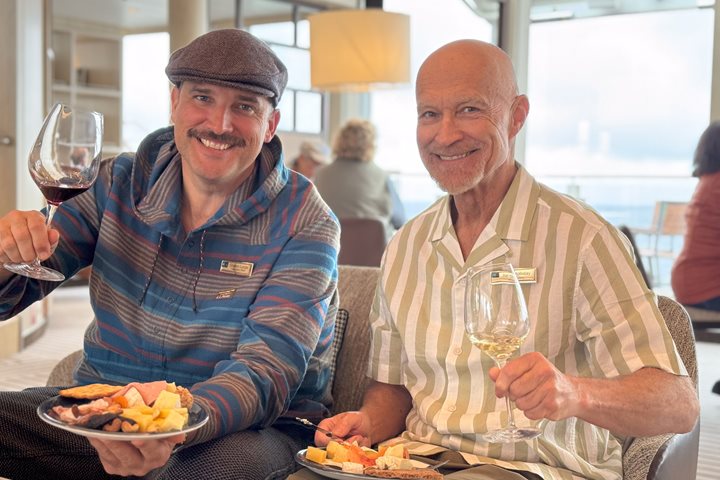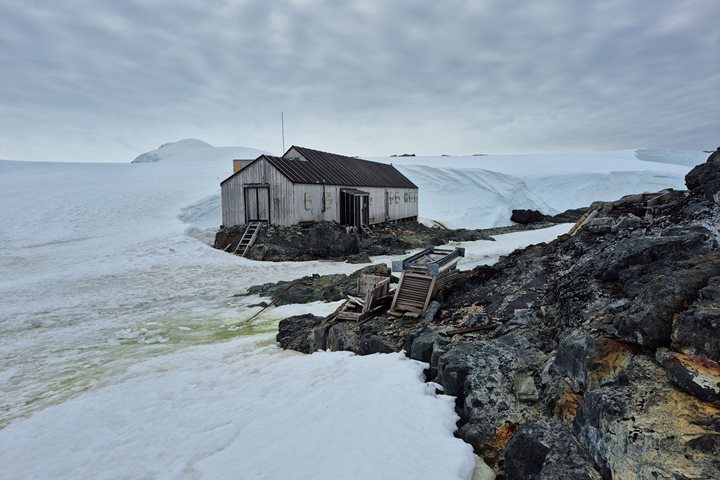At 0600 hours killer whales (Orcinus orca) were sighted from the bridge and many of us eagerly braved the cold wind to head out on deck to obtain a bird’s eye view of these majestic marine mammals. The small pod of killers were identified as Type ‘A’ Antarctic killer whales, the largest of the five sub-species found in Antarctic waters. These whales predominantly prey on minke whales (Balaenoptera acutorostrata) and seals and have developed unique hunting methods to catch their preferred quarry. These hunting techniques include ‘spy hopping’ to find seals located on pack ice before working as a team creating bow waves to dislodge their prey from the ice.
As we steamed into Cierva Cove, large cracks and booms were clearly heard from the glacier located on the southern edge of the bay. Large icebergs carved by nature into fantastic shapes filled the cove enclosed by heavy brash ice. The Zodiacs were deployed and all guests aboard departed for a cruise of the surrounding area. A family pod of three humpback whales (Megaptera novaeangliae) were quickly spotted ‘logging’ or resting on the surface. This behavior is indicative of all the whales and often occurs after intensive feeding on the abundant Antarctic krill (Euphausia superba). An inquisitive leopard seal (Hydrurga leptonyx) was located at the base of a particularly spectacular iceberg and many of the Zodiacs were fortunate enough to view the large seal at close quarters. Gentoo penguins (Pygoscelis papua) were in abundance and many of us visited a chinstrap penguin (Pygoscelis Antarctica) colony located on an island within the cove.
At 1300 hours we reached Mikkelsen Harbour on the south side of Trinity Island. The harbor was named by Nordenskjold during his 1901 – 1904 expedition. The sun appeared and the waters sparkled as the reflection of the nearby glaciers intensified creating a spectacular backdrop. Whilst some kayaked for the first time, others ventured ashore to explore D’Hainaut Island. On the island lies a small Argentine emergency refuge surrounded by nesting gentoo penguins (Pygoscelis papua). Snowy sheathbills (Chionis alba) and skuas (Catharacta spp) were also noted on the island. On the backside of the island remains of an old ‘water boat’ from the whaling era surrounded by whale bones from several species of whale including fin and humpback whales could be seen. Several large Weddell seals basked in the glorious sunlight on this fine day and loud cracks and booms could clearly be heard as the glacier across the bay calved small amounts of ice into the sea.







